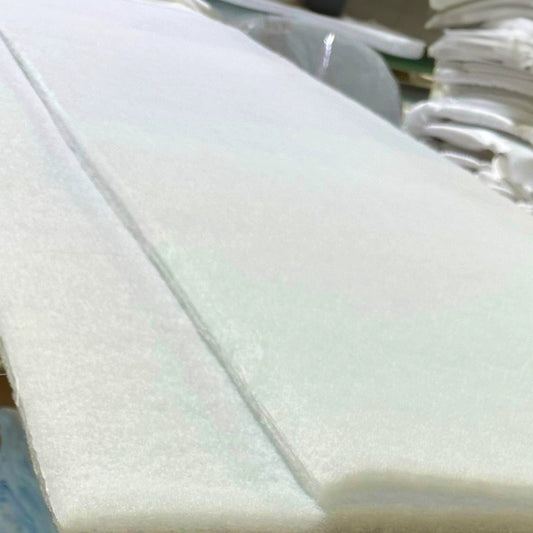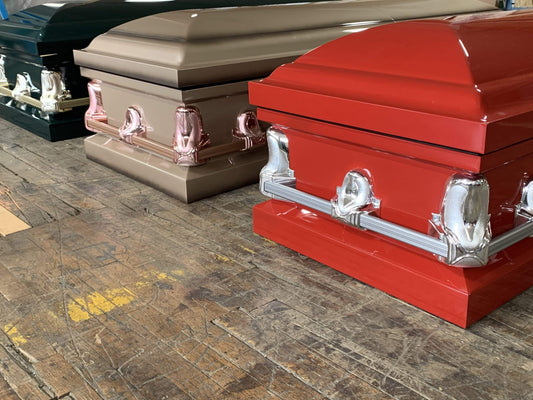What Is Embalming?
Embalming is a process where the body of a deceased individual is treated with several chemicals to slow down decomposition. In open casket funeral ceremonies, where the deceased’s body is displayed for viewing, embalming is a necessary step.
However, in the case of closed casket funerals, embalming is not required, but can be opted for by the family members, if necessary. Funeral homes usually carry out the process of embalming themselves or through a qualified embalmer.
Plan Your Farewell with Grace – Our Pre-Planned Caskets Offer Peace of Mind
A Closer Look At The Embalming Process
The process of embalming is carried out within a period of 2 hours and involves several steps. Let’s take a more in depth look at the entire process to try and understand how it is done.
1. Preparation of the body
Firstly, the body of the deceased is thoroughly cleaned to make it ready for embalming. In the case of open casket funerals, embalmers focus more on the face. Bits of cotton are placed inside the nostrils and a device called the mouth former is placed in the mouth. This helps give the body a more natural appearance and prevents drooping. Eye caps are carefully placed under the eyelids before closing the eyes.
2. Injection of embalming chemicals
Once the body is cleaned, embalmers proceed to inject a chemical solution, usually formaldehyde, into the arteries. This is done only after removing the blood from the body through an incision made at the jugular.
As the injected chemicals slowly replace the blood of the deceased, the body slowly hardens. Other areas of the body are also injected with the embalming fluid via a syringe. A stronger mix of the embalming fluid is also injected into the thoracic cavity of the body after removing body fluids and gas from the lungs, stomach, bladder, and intestines.
3. Dressing and styling of the body
The body is cleaned once again after injecting the extreme embalming solution. To give the deceased a more life-like appearance, cosmetics are applied and the hair is styled before being dressed in the clothing provided by the family members. Once that is done, the body is carefully placed in the casket chosen by the family and is displayed for viewing.
Important Things To Know About Embalming
If you’re contemplating embalming the body of your loved one, there are a few crucial things that you need to know about the process. Here’s a quick glimpse.
1. Embalming can preserve bodies for days
Generally, bodies that have been embalmed can be preserved for up to a week. However, the preservation is impacted by various factors like the chemicals used, the type of embalming technique, the condition of the body, and the temperature.
2. Embalming solutions are bad for the environment
The solutions used in the embalming process are carcinogenic and can be very harmful for the environment. So, if you’re planning on conducting an eco-friendly burial, you might have to skip the process entirely.
When To Choose Embalming?
Deciding if you should host a burial with embalming vs a burial without can be quite challenging. However, it can be easier to make a choice if you know when to choose embalming. Typically, embalming may be necessary in the following situations.
1. If there’s a delay in the funeral
It may not always be possible to hold the funeral immediately after the death of a loved one. You might want to hold the last rites a few days after the date of death to ensure that all your friends and relatives can be present. In such cases, extreme embalming is necessary to preserve the body and slow down decomposition.
2. If the body needs to be repatriated
If your loved one passes away in a foreign country requiring the need for repatriation, embalming may be a mandatory requirement.
3. If you’re planning on holding an open casket viewing
Embalming might be necessary if you’re thinking of holding an open casket viewing. The process not only helps preserve the body, but also helps give it a more natural and life-like appearance.
4. If your loved one died of an infectious disease
Since the process effectively prevents the spread of infectious agents, you might be required to embalm the body of your loved one if the cause of their death is due to an infectious disease.
Our Best Selling Products
If you’re planning on holding a natural or eco-friendly burial, many green burial homes may require you to forego embalming altogether due to the harmful effects that it has on the environment.
On the other hand, if you’re planning on holding a slightly delayed funeral or wish to preserve your loved one for a few more days so that all of your close relatives and friends get a chance to say their final goodbyes, you may choose to embalm the body. Ultimately, the decision to embalm the body completely rests you, the family members of the deceased.
Frequently Asked Questions (FAQs)
Q1: What does embalming fluid do to the human body?
Answer: Embalming fluid preserves the human body by delaying decomposition, disinfecting tissues, and restoring a natural appearance.
Q2: How long does embalming last?
Answer: Embalming typically preserves the body for about a week to several weeks, depending on environmental conditions and methods used.
Q3: What is embalming fluid made of?
Answer: Embalming fluid is primarily composed of formaldehyde, methanol, and other solvents, along with various additives for preservation, disinfection, and cosmetic purposes.

![Upgrade to Premium Weight [18-gauge steel]](http://titancasket.com/cdn/shop/products/casketthicknesswithnumbers.png?v=1680642906&width=533)








